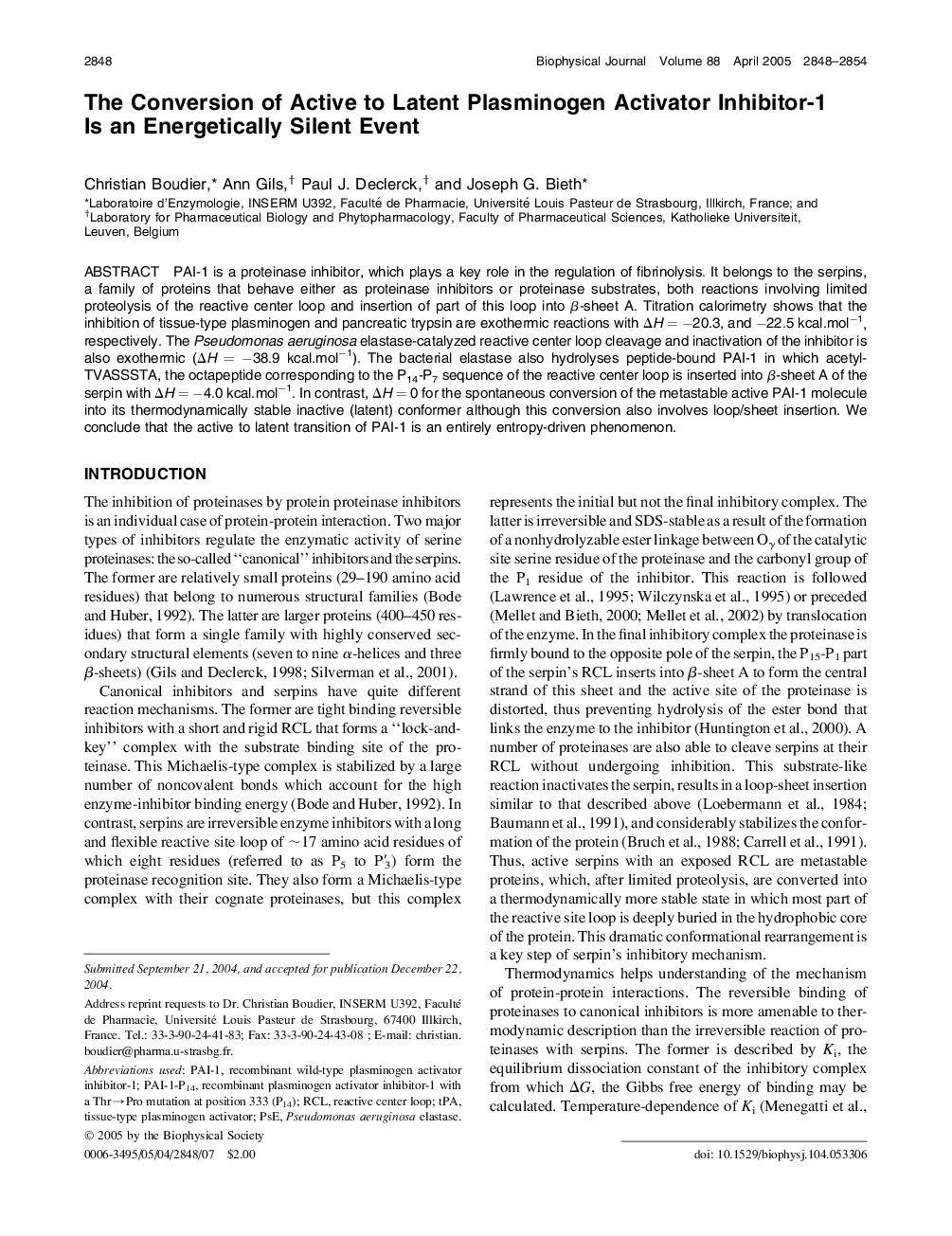| Article ID | Journal | Published Year | Pages | File Type |
|---|---|---|---|---|
| 1959577 | Biophysical Journal | 2005 | 7 Pages |
PAI-1 is a proteinase inhibitor, which plays a key role in the regulation of fibrinolysis. It belongs to the serpins, a family of proteins that behave either as proteinase inhibitors or proteinase substrates, both reactions involving limited proteolysis of the reactive center loop and insertion of part of this loop into β-sheet A. Titration calorimetry shows that the inhibition of tissue-type plasminogen and pancreatic trypsin are exothermic reactions with ΔH = −20.3, and −22.5 kcal.mol−1, respectively. The Pseudomonas aeruginosa elastase-catalyzed reactive center loop cleavage and inactivation of the inhibitor is also exothermic (ΔH = −38.9 kcal.mol−1). The bacterial elastase also hydrolyses peptide-bound PAI-1 in which acetyl-TVASSSTA, the octapeptide corresponding to the P14-P7 sequence of the reactive center loop is inserted into β-sheet A of the serpin with ΔH = −4.0 kcal.mol−1. In contrast, ΔH = 0 for the spontaneous conversion of the metastable active PAI-1 molecule into its thermodynamically stable inactive (latent) conformer although this conversion also involves loop/sheet insertion. We conclude that the active to latent transition of PAI-1 is an entirely entropy-driven phenomenon.
